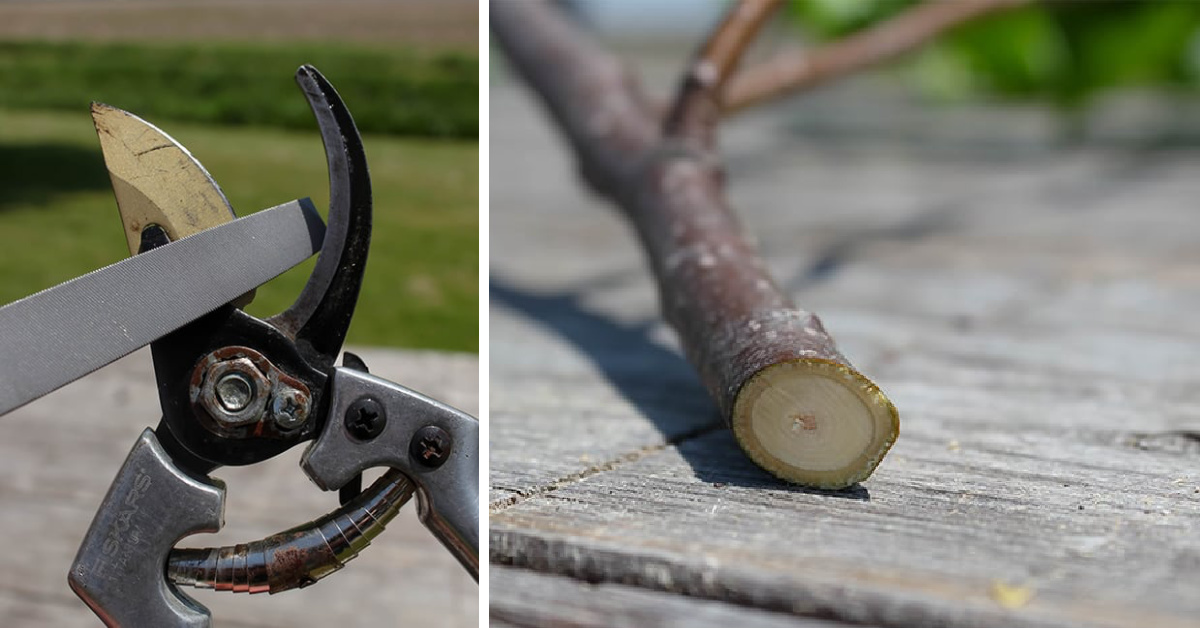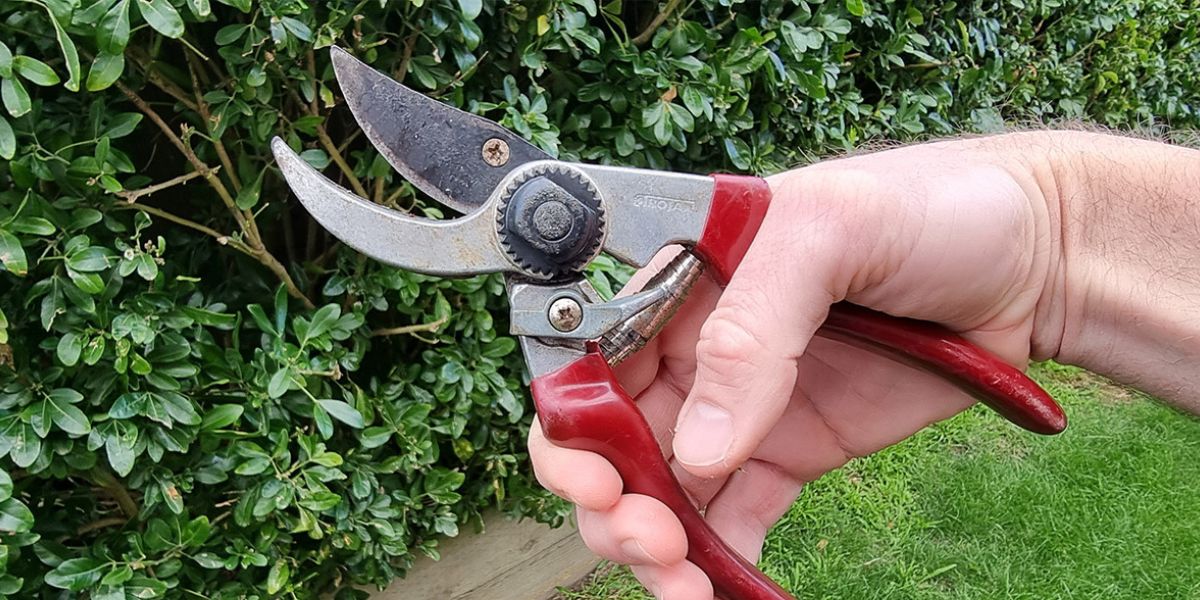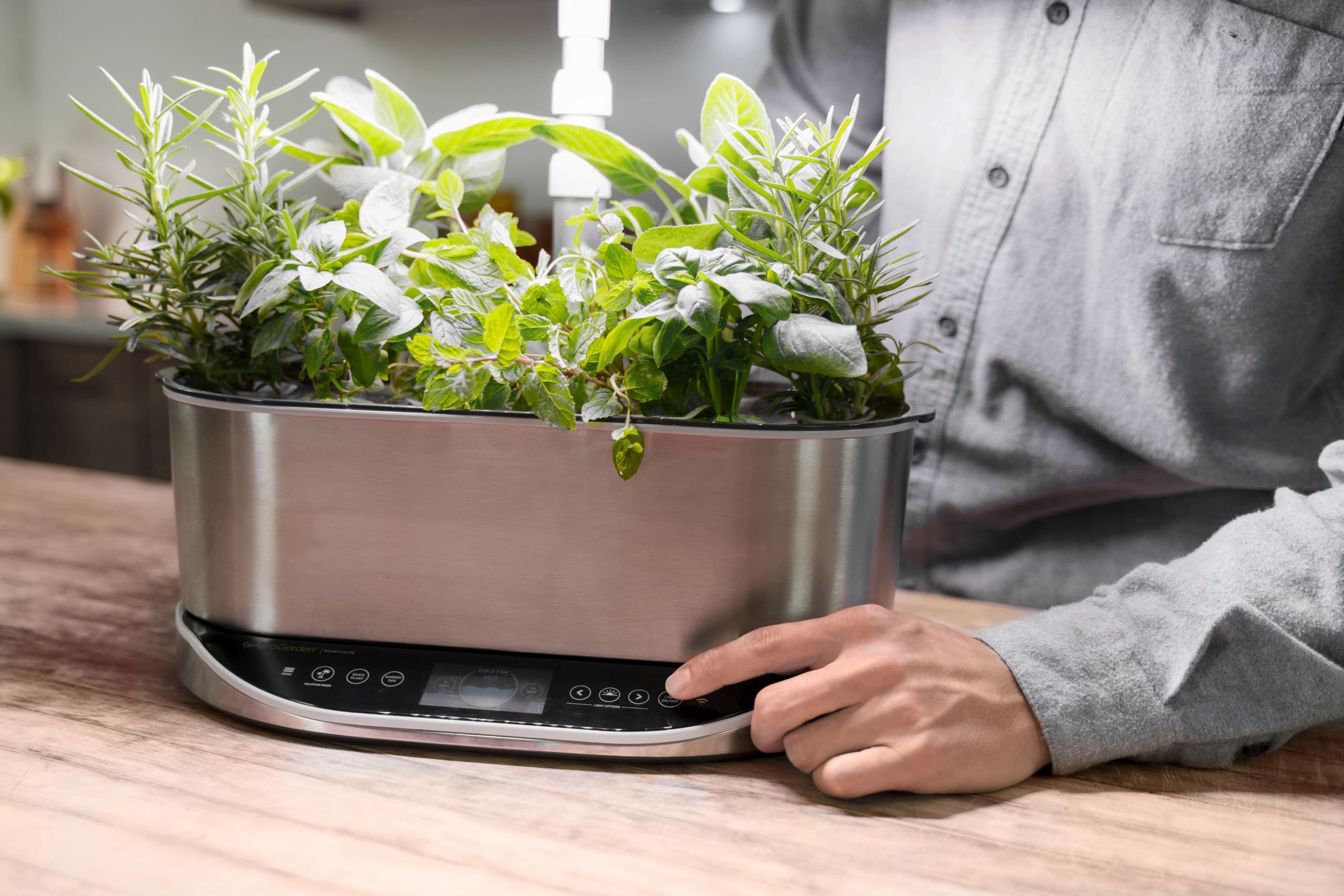Home>Gardening Techniques>Plant Care>How To Prune Oleanders Shrubs


Plant Care
How To Prune Oleanders Shrubs
Modified: January 22, 2024
Learn the essential steps for pruning oleander shrubs in this comprehensive guide. Proper plant care for healthy and vibrant oleanders.
(Many of the links in this article redirect to a specific reviewed product. Your purchase of these products through affiliate links helps to generate commission for Chicagolandgardening.com, at no extra cost. Learn more)
Table of Contents
- Introduction
- Pruning Tools and Safety Equipment
- When to Prune Oleander Shrubs
- Step-by-Step Guide to Prune Oleander Shrubs
- Pruning Techniques for Shaping Oleander Shrubs
- Removing Dead or Damaged Branches
- Tips for Pruning Oleander Shrubs in Different Seasons
- Common Mistakes to Avoid when Pruning Oleander Shrubs
- Conclusion
Introduction
Welcome to the world of plant care, where tending to the needs of your beloved green friends is both a fulfilling and rewarding experience. Among the many plants that require regular maintenance, oleander shrubs stand out for their striking beauty and vibrant blooms. Pruning plays a crucial role in promoting the health and vitality of these shrubs, ensuring they continue to thrive and enrich your outdoor space.
Pruning oleander shrubs may seem like a daunting task, but fear not! With the right knowledge and tools at your disposal, you can master the art of pruning and unleash the full potential of your oleanders. This article will guide you through the process, step-by-step, and provide valuable tips to ensure you achieve optimal results.
Before diving into the pruning techniques, it’s essential to equip yourself with the right tools and safety equipment. Having the appropriate tools will make the task more efficient and minimize the risk of injury. Pruning shears, loppers, and a pruning saw are some of the essential tools you’ll need for the job. Additionally, don’t forget to wear protective gear, including gloves and safety glasses, to safeguard yourself from any potential hazards.
Now that you’re armed with the necessary tools and safety equipment, let’s explore the best time to prune your oleander shrubs. Timing is crucial when it comes to pruning, as it can significantly impact the growth and flowering of your plants. Pruning at the right time ensures that you won’t accidentally remove flower buds or disrupt the plant’s natural cycle.
So, get ready to unveil the secrets of properly pruning oleander shrubs and discover the incredible benefits it can bring to your garden. Let’s dive into the step-by-step guide to prune these magnificent plants and explore different techniques for shaping them to perfection.
Pruning Tools and Safety Equipment
Before you embark on the rewarding journey of pruning your oleander shrubs, it’s important to gather the necessary tools and ensure your safety while working with sharp objects. Here are some essential pruning tools and safety equipment you’ll need:
- Pruning Shears: Also known as hand pruners or secateurs, pruning shears are your go-to tool for cutting through small branches and stems. Look for a pair with sharp blades and a comfortable grip to make your pruning tasks easier and more efficient.
- Loppers: Loppers are designed for cutting through thicker branches that are too large for pruning shears. They feature long handles and a cutting head that can be operated with both hands, providing leverage and power for cutting through tough branches.
- Pruning Saw: For thicker branches that cannot be easily cut with pruning shears or loppers, a pruning saw comes in handy. Its sharp, serrated blade makes clean and precise cuts, allowing you to remove larger branches with ease. Make sure to choose a pruning saw with a comfortable grip and a blade length suitable for your pruning needs.
- Protective Gloves: When handling sharp tools and branches, it’s crucial to protect your hands from cuts, scratches, and potential irritants. Choose a pair of thick, high-quality gardening gloves to shield your hands from thorns, sap, and other hazards you may encounter during the pruning process.
- Safety Glasses: Pruning involves working with sharp tools and branches that can potentially cause eye injuries. Protect your eyes by wearing safety glasses or goggles to prevent any debris or small particles from accidentally entering your eyes.
- Ladder: Depending on the size of your oleander shrubs, you may need a ladder to reach and prune higher branches. Make sure the ladder is sturdy and secure before climbing to avoid accidents or falls.
- Pruning Sealant: While not essential, a pruning sealant can be used to seal large wounds on branches, reducing the risk of infection and promoting faster healing. Look for a sealant specifically designed for tree and shrub pruning, and follow the manufacturer’s instructions for proper application.
Having the right tools and safety equipment will not only make your pruning tasks more efficient but also ensure your well-being throughout the process. Always prioritize safety and take necessary precautions to prevent accidents or injuries.
When to Prune Oleander Shrubs
Timing is crucial when it comes to pruning oleander shrubs. Pruning at the right time ensures that you don’t interfere with the plant’s natural growth cycle or accidentally remove potential flower buds. The best time to prune oleander shrubs is in early spring, just before new growth begins to emerge. This is typically in late February or early March, depending on your specific climate and location.
Pruning in early spring allows the plants to recover quickly and encourages vigorous growth throughout the growing season. It also ensures that you remove any dead, damaged, or overgrown branches before the new growth starts. By pruning early, you’ll be able to shape your oleander shrubs and maintain their desired size and structure.
It’s important to note that oleanders are sensitive to frost, so avoid pruning when there is still a risk of freezing temperatures. Pruning too late in the winter or early spring can leave the plants vulnerable to frost damage. Keep an eye on local weather conditions and wait until the threat of frost has passed before you start pruning.
While spring is the optimal time for general pruning, there may be situations where you need to prune your oleander shrubs at other times of the year. For instance, if there are dead or damaged branches that pose a safety hazard or if you want to remove any diseased or pest-infested parts, it’s best to do so as soon as you notice the problem, regardless of the season.
Remember, pruning should always be done with purpose and caution. Avoid excessive pruning, as it can negatively impact the plant’s overall health and flowering capabilities. It’s best to stick to regular maintenance pruning in early spring and only perform additional pruning when necessary.
Now that you know the ideal time to prune your oleander shrubs, let’s dive into the step-by-step guide to help you successfully complete the pruning process and achieve beautiful, well-maintained plants.
Step-by-Step Guide to Prune Oleander Shrubs
Pruning oleander shrubs may seem intimidating, but with the right approach, it can be a straightforward and rewarding process. Follow these step-by-step instructions to prune your oleander shrubs effectively:
- Start by examining your oleander shrub and identifying any dead, damaged, or diseased branches. These should be your first priority for removal. Look for branches with no new growth or those that are visibly withered or discolored.
- Using a pair of pruning shears, loppers, or a pruning saw, carefully remove the identified dead or damaged branches. Make clean cuts close to the main stem or branch collar, without leaving stubs. This will promote proper healing and prevent pests or diseases from entering the plant through exposed wounds.
- Next, assess the size and shape of your oleander shrub. If you want to control its size, promote fuller growth, or shape it into a specific form, now is the time to do so. Start by eliminating any overcrowded or crossing branches. This will improve air circulation and allow more light to reach the inner parts of the plant.
- To prune for size control or shaping, selectively remove long, leggy branches or trim back entire branches to desired lengths. Aim to preserve the natural form of the shrub while achieving the desired shape or size. Avoid excessive pruning, as it can weaken the plant and lead to fewer blooms.
- Continue pruning throughout the shrub, making clean cuts just above a node or leaf bud. This will encourage new growth from that point. Consider the overall symmetry of the shrub and maintain a balanced appearance by evenly distributing your cuts.
- Step back occasionally while pruning to assess the progress and ensure you’re achieving the desired shape and size. Don’t be afraid to make adjustments as you go.
- If your oleander shrub has matured into a large, woody plant with few flowering branches, you may need to perform more drastic rejuvenation pruning. This involves cutting the entire shrub back to about 6 inches from the ground, allowing it to regrow from the base. Note that this method should only be used on overgrown or neglected shrubs and will sacrifice that year’s blooms.
Remember to take breaks when necessary and step back to assess your work throughout the pruning process. This will help ensure that you’re achieving the desired result and maintaining the health and aesthetics of your oleander shrubs.
By following this step-by-step guide, you’ll be able to successfully prune your oleander shrubs and promote their overall growth and well-being. Now, let’s explore specific techniques for shaping these shrubs to perfection.
Pruning Techniques for Shaping Oleander Shrubs
Shaping your oleander shrubs is an important aspect of pruning, as it allows you to create a visually appealing and well-balanced plant. Here are some pruning techniques you can use to shape your oleander shrubs:
- Selective Branch Removal: To shape your oleander shrub, start by selectively removing branches that disrupt the overall form or crowd the center of the plant. Look for branches that cross or rub against each other, as well as any that are growing in undesirable directions. By carefully removing these branches, you can improve the overall structure and aesthetics of the shrub.
- Formal Hedge Pruning: If you’re aiming for a formal look with well-defined edges, consider pruning your oleander shrub into a hedge. Use a string or guide to mark the desired height and shape of the hedge. Then, carefully prune the outer branches slightly shorter than the inner branches to ensure adequate light exposure for all parts of the shrub. Regular maintenance pruning will be necessary to maintain the hedge shape.
- Open Center Pruning: For a more natural and open appearance, you can opt for an open center pruning technique. Start by removing any branches that grow towards the center of the shrub, as well as any upright or downward-growing branches. This technique creates a more airy and open structure, allowing sunlight to reach the inner parts of the plant and promoting healthy growth.
- Topiary Pruning: If you want to get creative and add a touch of artistry to your garden, consider topiary pruning. This technique involves shaping your oleander shrub into geometric or abstract forms, such as spheres, cones, or spirals. Topiary pruning requires patience and precision, as it involves meticulously trimming and shaping the shrub over time to achieve the desired design.
- Espalier Pruning: Espalier pruning is a technique where the shrub is trained to grow flat against a wall or support structure. This method is commonly used to create a decorative and space-saving display. To achieve espalier pruning, carefully prune and train the branches in a horizontal or diagonal pattern, tying them to a trellis or wires as necessary.
- Dwarfing Pruning: If you have limited space or want to maintain a compact size, consider utilizing dwarfing pruning techniques. This involves periodically pruning back the branches to control growth and maintain the desired size of the shrub. Regularly monitor and trim any new growth to prevent the plant from becoming overgrown.
When shaping your oleander shrubs, remember to maintain an overall balanced and natural appearance. Avoid drastic pruning that may compromise the health and flowering capabilities of the shrub. With the right pruning techniques, you can create stunning and well-maintained oleander shrubs that enhance the beauty of your garden.
Now that you’re equipped with various techniques for shaping your oleander shrubs, let’s move on to the important task of removing dead or damaged branches.
Removing Dead or Damaged Branches
Regularly removing dead or damaged branches from your oleander shrubs is an essential part of their overall health and appearance. Dead branches not only detract from the aesthetics of the plant but can also serve as entry points for pests and diseases. Here’s how to effectively remove dead or damaged branches:
- Start by visually inspecting your oleander shrub, looking for branches that show no signs of new growth, have a withered appearance, or are visibly diseased or damaged.
- Using a pair of sharp pruning shears or loppers, make a clean cut just above the branch collar, which is the swollen area at the base of the branch where it connects to the main stem. Avoid leaving stubs, as they can hinder the healing process and increase the risk of disease.
- When removing larger dead or damaged branches that are beyond the capacity of pruning shears or loppers, employ a pruning saw. Begin by making an undercut about a foot away from the branch collar, cutting partially through the bottom side of the branch. Next, make a top cut further away from the branch collar, allowing the branch to fall away without damaging adjacent branches or the main stem.
- After removing dead or damaged branches, take a step back and assess the overall appearance of your oleander shrub. Make any necessary additional cuts to maintain a balanced and aesthetically pleasing shape.
- Dispose of the removed branches properly, either by adding them to a compost pile or discarding them in accordance with your local waste disposal guidelines.
Regularly inspecting your oleander shrubs for dead or damaged branches and promptly removing them will not only improve the plant’s appearance but also promote its overall health and vitality. It’s best to perform this maintenance task as soon as you notice any signs of damage or disease to prevent further spreading and potential harm to the entire shrub.
Now that you understand the importance of removing dead or damaged branches, let’s explore valuable tips for pruning oleander shrubs in different seasons.
Tips for Pruning Oleander Shrubs in Different Seasons
Pruning oleander shrubs at the right time of year is crucial for their growth and flowering potential. Here are some helpful tips for pruning your oleander shrubs in different seasons:
Spring: As mentioned earlier, early spring is the ideal time for general pruning of oleander shrubs. This is when new growth is starting to emerge. During this time, focus on removing dead or damaged branches and shaping the shrub to maintain its desired size and form. Be cautious not to prune too late in spring to avoid the risk of frost damage.
Summer: In summer, it’s best to avoid major pruning of oleander shrubs as they are in their peak blooming season. Pruning during this time can disrupt the flowering process and result in fewer blooms. However, you can still perform light maintenance pruning, such as removing any dead or diseased branches that may arise.
Fall: Fall is generally not an optimal time for pruning oleander shrubs. As the growing season comes to an end, the plant is preparing for dormant periods. Pruning at this time can stimulate new growth that may be susceptible to winter frosts. However, if there are any dead, damaged, or diseased branches, it’s necessary to remove them promptly to prevent further damage or disease spread.
Winter: While winter is not the preferred time for pruning oleander shrubs, it can be a suitable time for light maintenance pruning. Use this time to prune excess growth or thin out crowded branches to promote better air circulation. However, be cautious not to remove too much or expose the shrub to severe winter weather conditions.
Regardless of the season, it’s important to prioritize the health of your oleander shrubs. Keep an eye out for any signs of disease, pest infestation, or damage, and address these issues promptly. Regularly remove dead or damaged branches, regardless of the season, to maintain the overall health and appearance of your plants.
Remember, every garden and climate is unique, so it’s essential to consider local conditions and specific needs of your oleander shrubs when determining the best time for pruning. If unsure, consult with a local horticulturist or gardening expert for personalized guidance.
Now that you have a better understanding of pruning in different seasons, let’s explore common mistakes to avoid when pruning oleander shrubs.
Common Mistakes to Avoid when Pruning Oleander Shrubs
Pruning your oleander shrubs is an important task that requires careful attention and proper technique. To ensure the health and beauty of your plants, avoid these common mistakes when pruning oleander shrubs:
- Over-Pruning: One of the most common mistakes is excessive pruning. Removing too much foliage can weaken the shrub and inhibit its ability to produce vibrant blooms. Avoid drastic pruning unless necessary, such as rejuvenation pruning on overgrown shrubs.
- Pruning at the Wrong Time: Pruning at the wrong time can negatively impact the growth and flowering of your oleander shrubs. Follow the recommended pruning schedule, primarily focusing on early spring for general pruning. Avoid pruning during the peak blooming season to prevent a reduction in the number of blooms.
- Improper Cutting Technique: Making improper cuts can result in damage to the shrub and hinder its healing process. Always make clean cuts just above the branch collar, without leaving stubs. Avoid cutting too close or too far from the main stem, as it can impede the plant’s ability to heal properly.
- Ignoring Safety Precautions: Safety should never be overlooked when pruning oleander shrubs. Always wear protective gloves and safety glasses to safeguard against potential injuries from sharp tools or falling debris. Use sturdy and stable ladders when necessary, ensuring a secure footing.
- Pruning During Frost Periods: Pruning oleander shrubs during frost periods can lead to significant damage. Frost can harm exposed, freshly pruned areas, making the plant more susceptible to diseases and pests. Avoid pruning during frosty weather and wait for milder temperatures before proceeding.
- Not Addressing Diseased or Infested Branches: Neglecting to remove diseased or pest-infested branches can have a detrimental effect on the overall health of your oleander shrubs. Regularly inspect your plants for any signs of disease or pests and promptly remove affected branches to prevent the problem from spreading.
- Ignoring the Natural Shape: Oleander shrubs have a natural growth pattern and shape that enhances their beauty. Avoid forcing unnatural shapes onto the shrub or pruning too aggressively to alter its form. Work with the natural growth habit of the shrub to maintain a pleasing and healthy appearance.
By avoiding these common mistakes, you can ensure that your oleander shrubs thrive and flourish. Remember, pruning is a delicate process, and understanding the specific needs of your shrubs will help you make informed decisions when it comes to pruning techniques and timing.
Now that you’re aware of common mistakes to avoid, you’re well-equipped to prune your oleander shrubs with confidence.
Conclusion
Pruning your oleander shrubs is essential for their overall health, vitality, and aesthetic appeal. By following the proper techniques and timing, you can successfully maintain these beautiful plants and enjoy their vibrant blooms year after year.
Remember to gather the necessary tools and safety equipment before starting the pruning process. Pruning shears, loppers, and a pruning saw are essential tools to have at your disposal. Additionally, protect yourself with gloves and safety glasses to prevent any potential injuries.
Timing is crucial when it comes to pruning oleander shrubs. Early spring is the best time for general pruning, just before new growth begins to emerge. This allows the shrubs to recover quickly and promotes vibrant growth throughout the growing season. Be cautious of frost and avoid pruning during periods of freezing temperatures.
Follow the step-by-step guide to effectively prune your oleander shrubs, and utilize specific techniques for shaping them to perfection. Whether you prefer a formal hedge, an open center, or a topiary design, there are various techniques you can employ to achieve the desired shape and size.
Throughout the pruning process, be sure to remove any dead or damaged branches promptly. This not only improves the appearance of the shrub but also prevents the spread of disease and pest infestations.
Be mindful of the pruning tips for different seasons, as pruning at the right time can significantly impact the growth and flowering of your oleander shrubs. Avoid common mistakes that may harm the shrubs, such as over-pruning or improper cutting techniques.
Pruning your oleander shrubs is a labor of love. By investing time and care into pruning, you can promote their overall health and create a stunning display of thriving plants in your garden.
Now that you have a comprehensive understanding of pruning oleander shrubs, it’s time to put your knowledge into practice. Embrace the art of pruning, and watch your oleander shrubs flourish and bring joy to your outdoor space.









